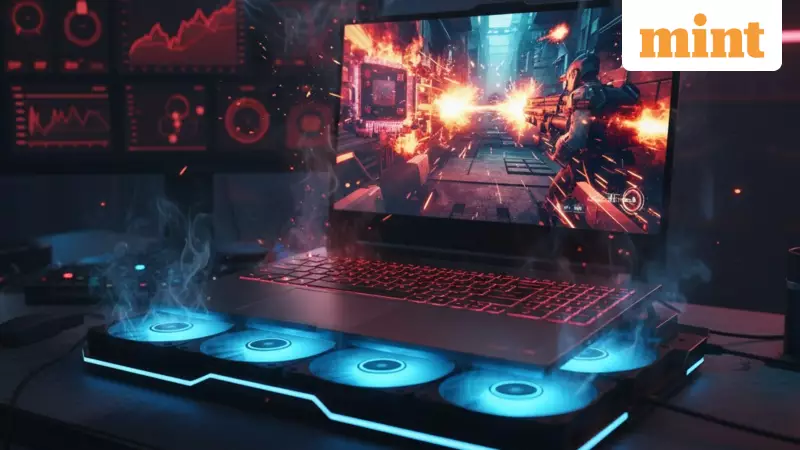
In 2025, laptop cooling pads have quietly transformed from a niche accessory into a must-have item for students, hardcore gamers, and the growing remote workforce across India. The fear of a device overheating at a critical moment—be it during an intense gaming battle or while submitting a crucial assignment—is a universal worry. This surge in popularity has sparked a major debate: are these pads a genuine performance-saving hack, or just clever marketing hype? This guide cuts through the noise to deliver clear answers.
How Laptop Cooling Pads Function: Active vs Passive
Cooling pads primarily come in two distinct designs. The first is active cooling, which employs multiple USB-powered fans to aggressively pull heat away from the laptop's underside. The second type is passive cooling, a fan-less approach that relies on elevating the device and using heat-conductive materials like aluminium or mesh to naturally dissipate warmth. Both styles are positioned beneath the laptop, making correct placement and alignment with the device's own air vents absolutely critical for effectiveness. Laptops that feature bottom or side vents tend to benefit the most from this added support.
The Real Benefits: More Than Just Cooling
The primary advantage of using a cooling pad is a significant reduction in the laptop's internal temperature during demanding tasks. This directly prevents the system from slowing down due to thermal throttling. Many users report smoother, more consistent performance during activities like gaming or video editing. Furthermore, maintaining lower operating temperatures helps protect vital internal components, including the CPU, GPU, and SSD, which can contribute to the laptop aging more gracefully over time. This makes cooling pads particularly valuable for devices with average ventilation or those that are regularly pushed to their limits. As a welcome bonus, the raised angle also improves typing ergonomics and stops the warm base from making your lap uncomfortable during long sessions.
Do You Actually Need a Laptop Cooling Pad?
The value of a cooling pad is not universal; it heavily depends on the user and the device. Heavy-duty users like gamers, coders, video editors, and students with older laptops often see the most noticeable gains. In contrast, newer ultrabooks with advanced, built-in cooling systems may only experience a mild improvement, as their internal design already manages heat quite efficiently. The final benefit is also tied to your specific laptop's airflow design. While a good pad certainly helps, the results will always vary based on the laptop model and the intensity of your workload.
Choosing the Right Cooling Pad in 2025
The market in 2025 offers a wide array of cooling pads, differing in size, fan power, and special features. Generally, models with more fans and a higher RPM (Revolutions Per Minute) provide stronger airflow. Look for pads with adjustable height settings, which aid both cooling and posture. Extra USB ports are a convenient addition for crowded desks, and some models feature RGB lighting to complement a gaming aesthetic. For durability and stability, prioritize pads constructed from robust aluminium mesh or high-quality plastics.
Understanding the Limitations
It is crucial to have realistic expectations. A cooling pad cannot fix serious hardware malfunctions or internal dust buildup. Its role is to enhance external airflow, not magically transform your laptop's core capabilities. Any cooling improvement is contingent on the laptop's own intake vents being clear and functional. While powerful fans might produce a gentle hum, most modern pads are quiet enough for everyday work and study. Ultimately, a cooling pad works best as a reliable sidekick to your laptop's internal systems, not as a standalone miracle machine.





